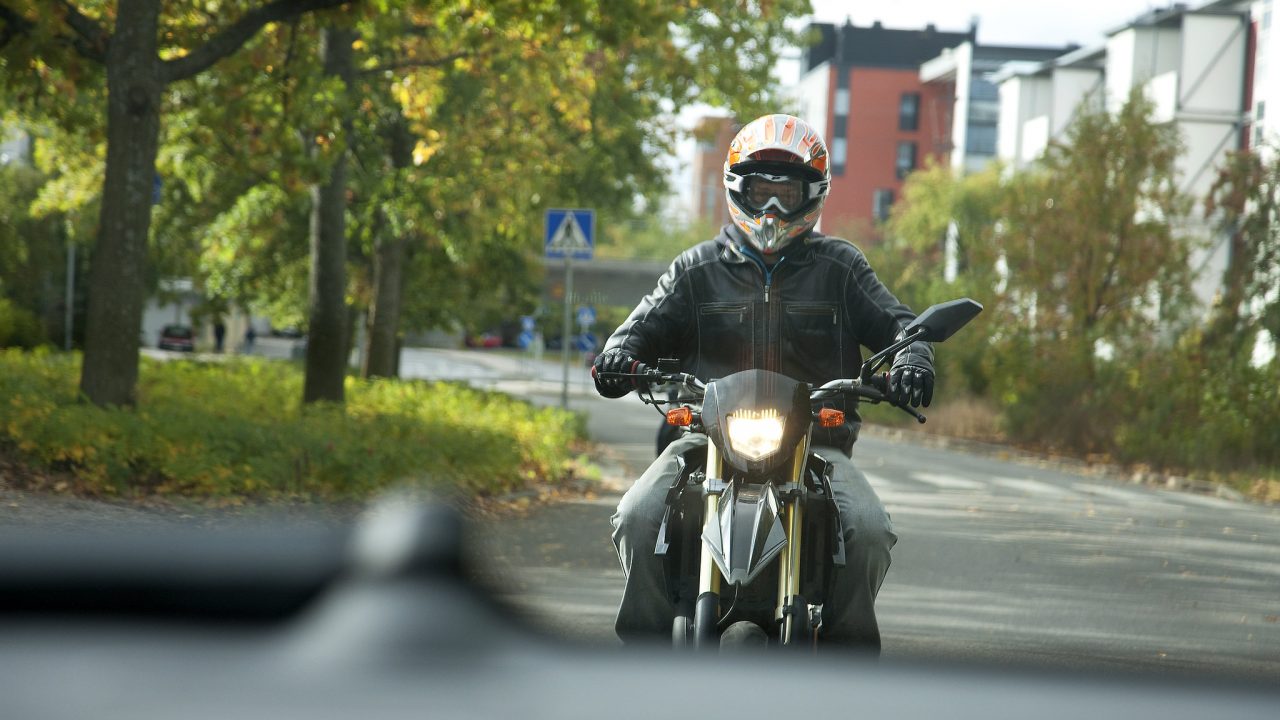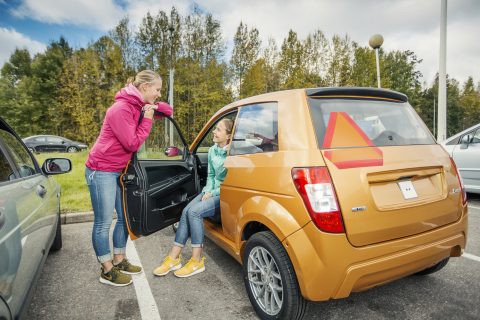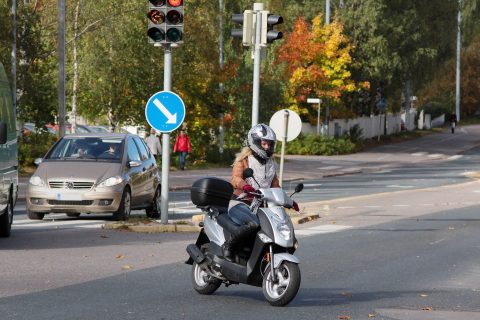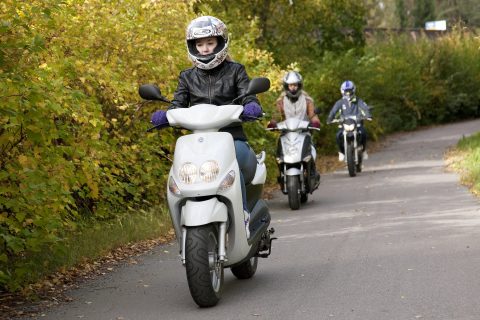
Mopeds and equipment
A moped driver’s equipment includes a good helmet, sturdy footwear and proper gloves. The moped and the driver both have to be equipped properly when driving on roads.
Helmet and other driving gear
The majority of serious injuries in moped accidents involve the head. That is why wearing a helmet is mandatory by law. The helmet must be an approved model and secured carefully and sufficiently tightly. An appropriate and durable driving suit increases safety and comfort.
The suit protects against wind and bruises in case of a fall. Moped drivers should also wear sturdy footwear and proper gloves. A colourful helmet and colourful, reflective clothing improve visibility, as mopeds are otherwise difficult to spot. The passenger should also wear other protective gear in addition to the helmet.
The main purpose of the gear is to protect in case of an accident. Protective gear must be able to withstand impact and abrasion. Motorcycle gloves and boots, chest and back guards give protection in the event of a fall or collision.
Moped equipment and maintenance
The moped must be in safe condition and appropriately equipped. All the original equipment must function properly.
Key equipment and accessories
- efficient front and rear brakes
- intact tyres as specified in the registration certificate with a tread of at least 1.6mm. Winter tyres with or without studs must be used from the beginning of November until the end of March, according to weather and driving conditions. A tyre with a coarse texture suitable for winter use with a tread groove depth of at least 3mm qualifies as a winter tyre.
- regulatory lights and reflectors
Other mandatory equipment for mopeds
- handles for the passenger
- a device to prevent unauthorised use
- standing supports
- a safe fuel system
- a regulatory silencer
- speedometer
- audible warning device
- rear registration plate
- a rear-view mirror at least on the left side.
Parts wear out and the moped must be serviced regularly. An unserviced moped is dangerous and can become expensive. Detailed instructions can be found in the maintenance manual of the moped.
Helmet, the number one safety gear for moped drivers
The purpose of the helmet is to protect the head in the event of an accident. It also protects against rain, heat, cold weather, noise and flying stones.
Appearance, lightness or affordability must not be the only criteria when selecting a helmet. The helmet must fit snugly. The colour of the helmet is important for detection and preventing others from cutting in front of you. A highly visible, single-colour helmet is best.
Motorcycle and moped helmets should offer good protection against impact. In an accident, the helmet absorbs the impact force and spreads the point load over a larger area.
The helmet must retain its shock-absorption characteristics over multiple consecutive impacts.
The helmet must protect
- against penetration by a sharp object through the outer and inner shell
- against compression, for example if the driver is run over by a car
- the shape must not be such that it could increase spinal injuries when sliding or falling.
The helmet must be able to withstand
- The outer casing must withstand abrasion caused by sliding (friction) in order to retain its protective characteristics
- normal wear without deterioration in its protective features.
The helmet must not restrict
- vision, hearing or balance
- oxygen supply.
The helmet must be type approved
Road helmets approved in Finland are either:
- ECE Regulation No 22 approved: The ECE approval is indicated by a capital E letter inside a circle
Or
- US standard FMVSS 218 approved: The US standard is indicated by the capital letters DOT.
Other approvals, such as JIS or Snell, are not recognised for road use in Finland.
Approval mark
ECE22-05 approved helmets bear the following markings inside the helmet or the chin strap:
- A circled capital E and number: The number indicates the country in which the testing and approval have been carried out.
- The actual ECE22 approval number: The number indicates the manufacturer, the helmet model and the size of the outer casing. The letter P, J or NP indicates the exact testing method.
- Manufacturer’s serial number: E.g. 0128387.
- Manufacturing period: E.g. 05/07.
Test methods
- P0595011, P – Protective. Helmets with a chin guard. The P approval requires that the chin guard has successfully passed the test.
- NP0595011, NP – Non Protective. Helmets with chin guards that have not passed the P approval test.
- J0595011, J – Jet. Open helmets without a chin guard.


